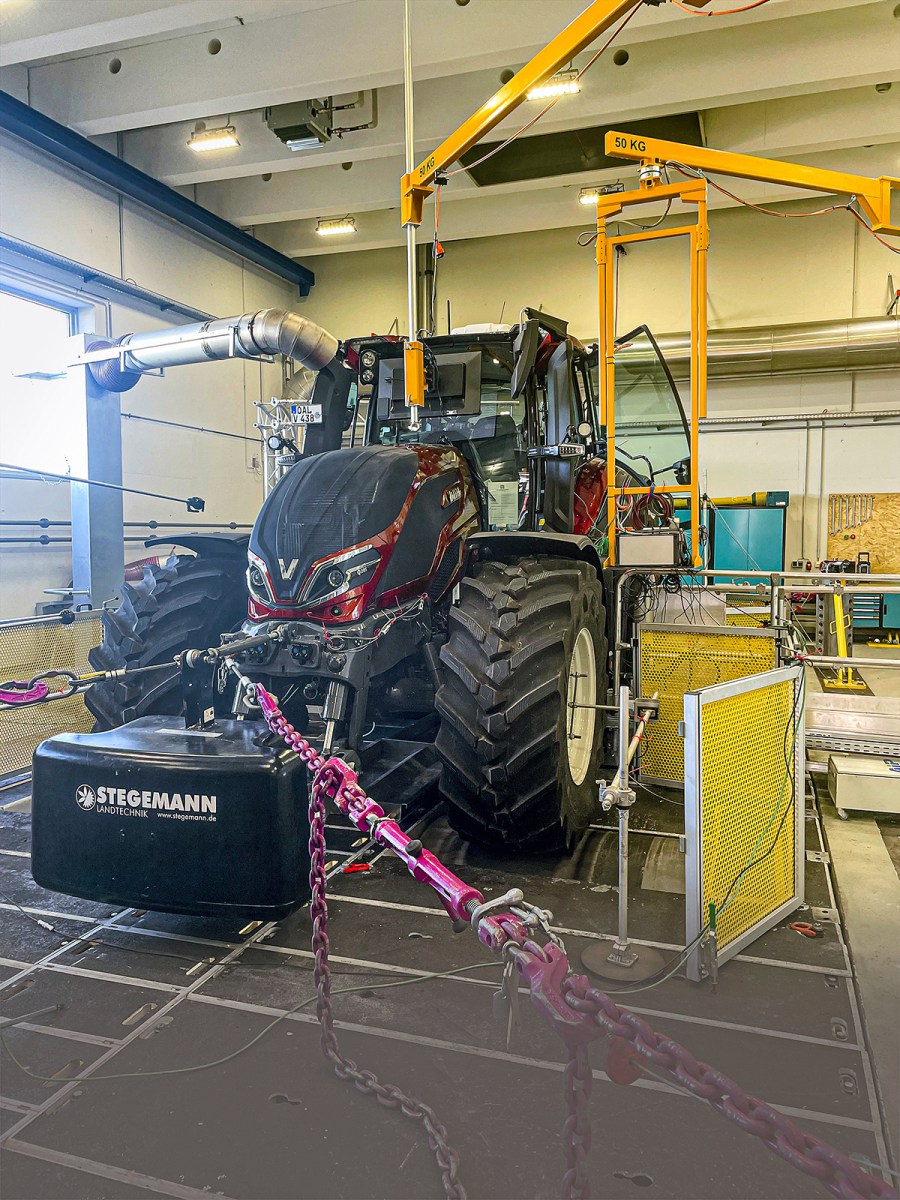Alternative fuels that can minimise the CO2 emissions from diesel burning engines are now coming to the market. The DLG test centre filled a Valtra Q285 once with HVO and then repeated the test with diesel. Here are the results.
KEEPING IT BRIEF
- HVO stands for hydrotreated or hydrogenated vegetable oil.
- HVO is pure fuel with a higher cetane rating than diesel.
- The DLG measurements show HVO consumption is higher in l/hr and lower in g/kWh compared to diesel.
This is not one of our typical tractor tests, as we’ve already taken an in- depth look at the pros and cons of the Valtra Q285 in the profi 6/2024 magazine. Here our attention is much more focused on what this tractor’s performance is like when fuelled with HVO compared to diesel.
DLG engineer Martin Hanstein and Valtra specialist Jens Wohlers initially presented the results of this comparison test at the German agricultural contractor show Deluta late last year. As regular profi readers will know, by using the now proven Powermix testing procedure with the rolling road and dyno, the measurements can be repeated, allowing you to compare the results.
At the time of our Q285 tractor test, Valtra took the opportunity to commission the DLG to measure the performance and fuel consumption using synthetically produced HVO and then with standard B7 diesel.
Many businesses are now looking to fully capitalise on reducing their CO2 footprint, be it selling carbon credits or appealing to customers seeking reduced emissions and more sustainable production, or perhaps this is something you simply wish to do off your own back. The CO2 emissions of your own tractors can be one of many factors in this balance, and switching to HVO could be an easy win. But HVO comes with a catch; it costs slightly more than diesel.
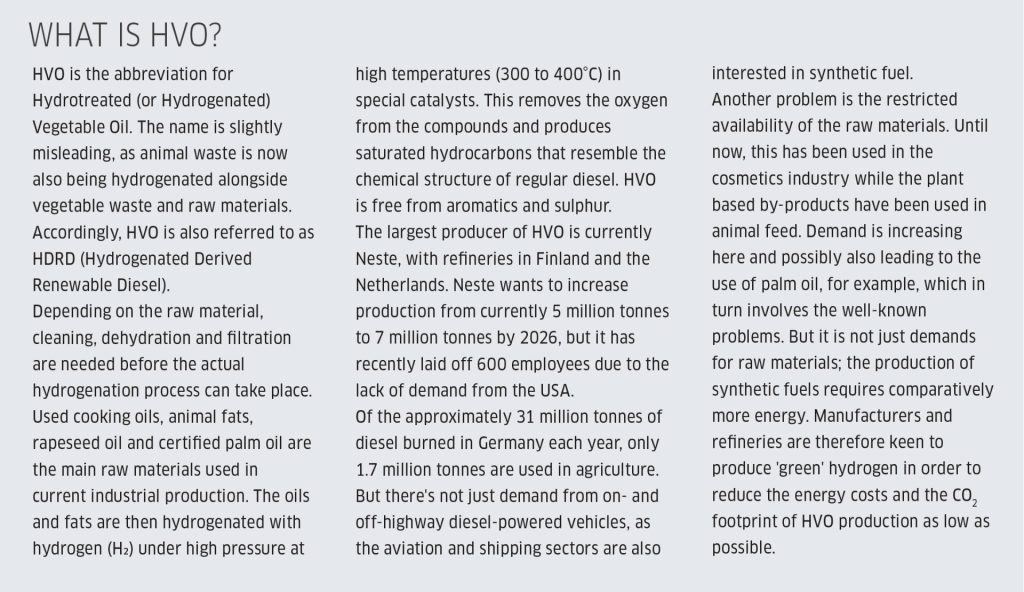
However, before we compare the results it’s worth taking a proper look at a few of the properties of HVO, diesel fuel and pure biodiesel. Density and calorific value are especially important when measuring fuel consumption.
If consumption is considered in just volume in litres per hour, diesel will perform better because it has a higher density than HVO which equates to more energy per litre. But if consumption is compared gravimetrically — i.e. by mass — in kg/hr, HVO produces the better rates (see table ‘HVO compared to diesel and biodiesel’).
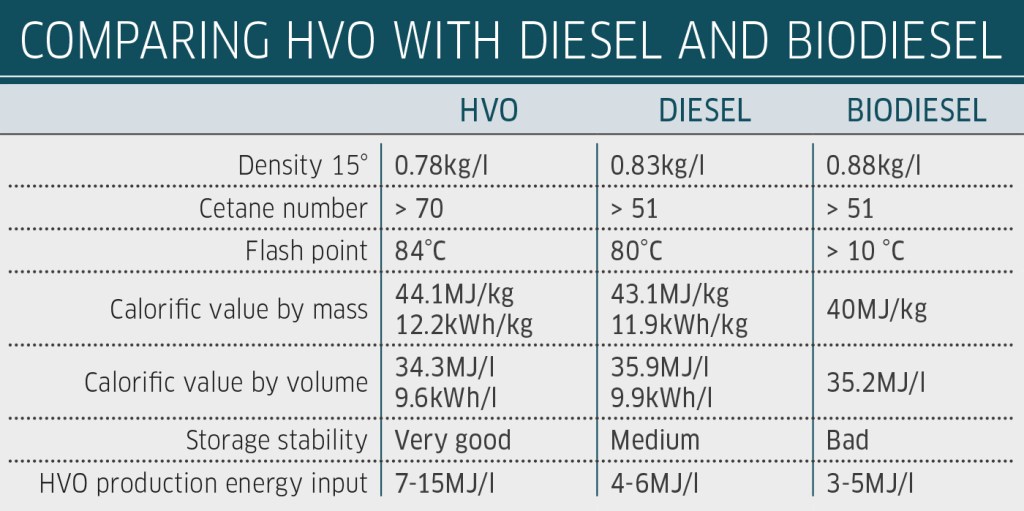
A bit more bang
Hydrogenated fuel HVO has a higher cetane number than both diesel and biodiesel. This means it ignites more readily than the other fuels so the engine has a better start-off performance in low temperatures. And if biodiesel is not added to HVO, it’s far better when it comes to storage than B7 diesel or pure biodiesel as the microorganisms have practically no chance of survival in HVO. This means no diesel bug issues, which may well be enough on its own to sway machine owners. Without any additives, HVO can be stored at temperatures as low as -40°C.
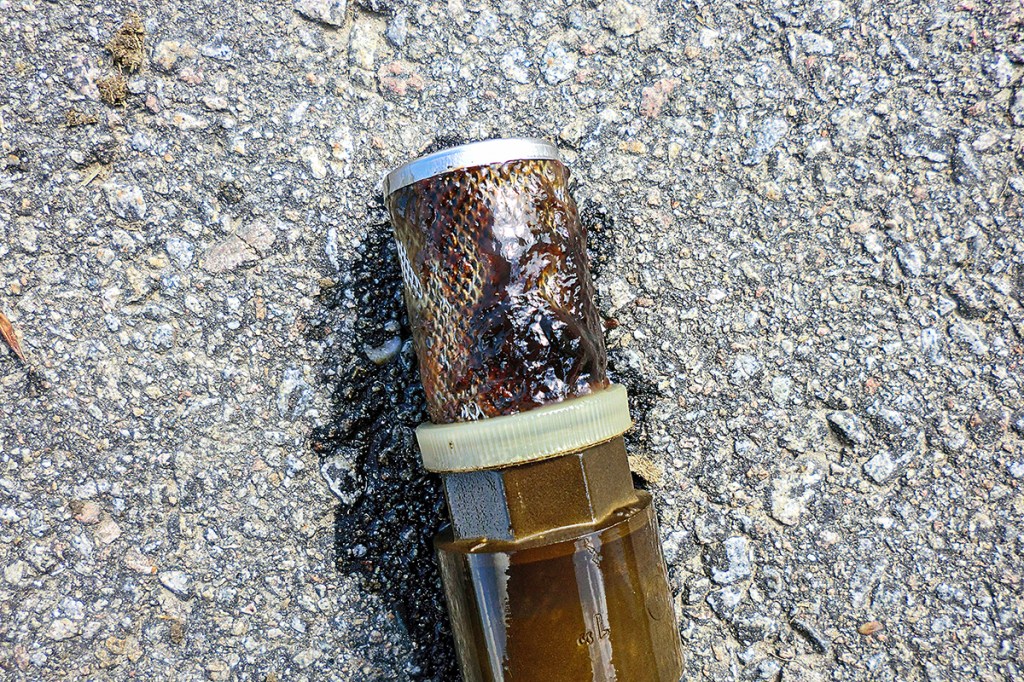
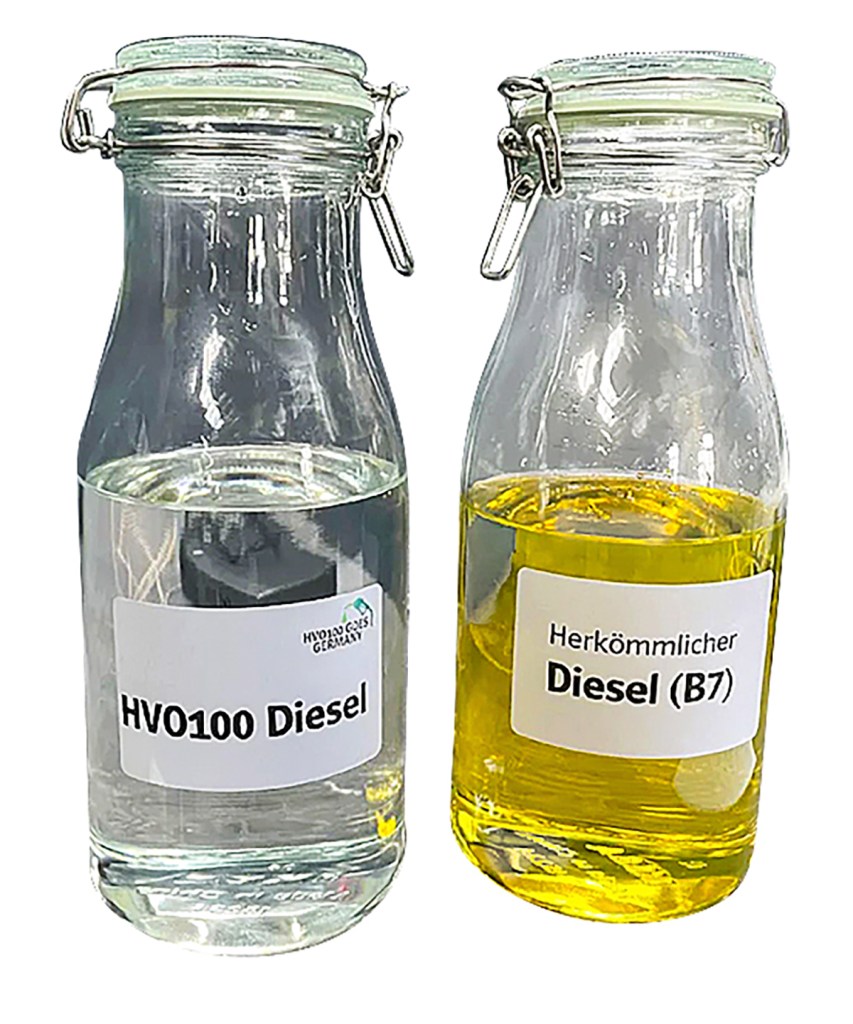
Fill up and drive away
Back to our Valtra Q285 fuel comparison. Pure vegetable oil was a major talking point 15 or so years ago (see our Fendt Vario 820 Greentec test in profi 4/2010), but it needed manufacturer approval along with some tweaks to the fuelling system and service schedule. This isn’t the case with HVO.
Moreover, a number of manufacturers are now shipping tractors from the factory with HVO in the tank, and Valtra is one of those. There are no changes made to the software or hardware from the tank to the injection, to the combustion chamber, to the cooling or to the exhaust after-treatment — all of the components remain the same on the Q series and Valtra’s other ranges.
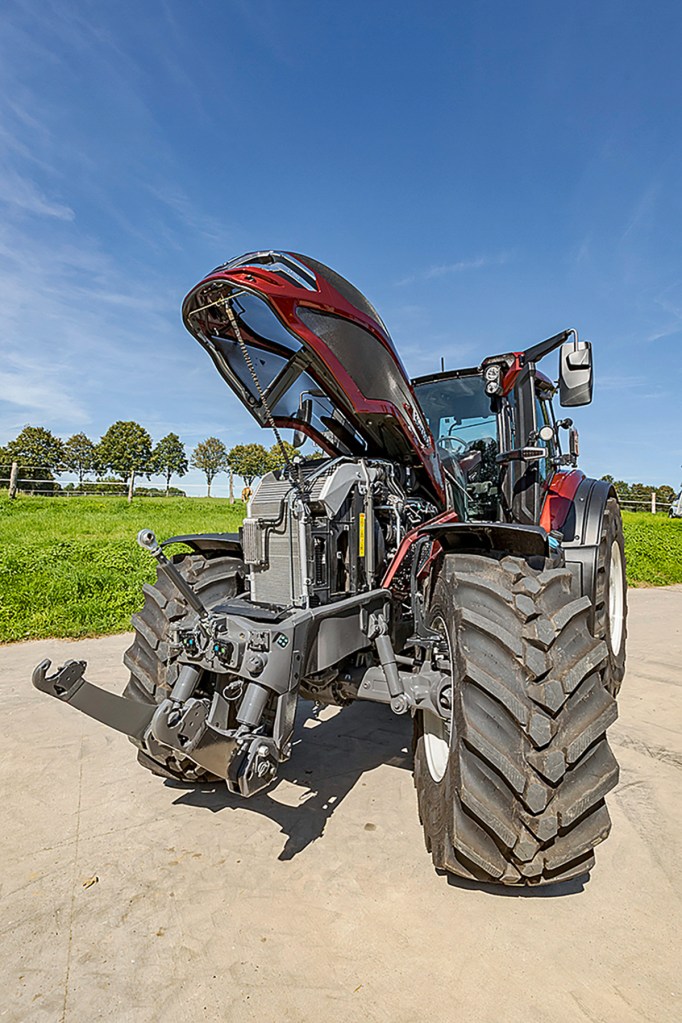
Blending HVO with diesel also isn’t an issue, although some manufacturers warn against constantly switching between fuel types. This is because the rubber seals in the fuel system expand differently, depending on the type of fuel used.
Powermix test
In the DLG’s Powermix measurements, we first compared the maximum pto power output of the Valtra Q285, once powering the engine with diesel and once with HVO. Like the rest of the Q range, the Q285 model features a six-cylinder, 7.4-litre AgcoPower motor with a max power of 210kW/285hp, and there is also an additional 14kW/20hp power boost for pto and/or hydraulic work as well as when travelling at over 15km/hr. To meet Stage V exhaust emissions it uses DOC and SCR.
Fuelled by B7 diesel, the engine delivers 181.0kW/246.0hp to the rear pto. With HVO (sourced from Neste), the dyno measured 180.4kW/245.3hp. Even with the boost engaged, the difference between the two fuels is insignificant — at 191.0kW versus 190.3KW.
At full load, even the AdBlue consumption is almost identical, maxing out at 4.31kg/hr (diesel ) and 4.26kg/hr (HVO).
Consumption on the roll
Next, we put the Q285 (which incidentally is almost identical to the Massey Ferguson 8S Dyna-VT in terms of hardware), on the rolling road for the real-world Powermix tests. This protocol simulates a wide range of different tasks and processes in 12 test cycles. In each cycle, the engine is exposed to a different load. For example, the DLG engineers not only measure the drawbar power at the wheels, but also the pto and hydraulic power simultaneously.
This will expose any differences in power delivery. In terms of results, in all 12 cycles HVO fuel consumption is lower than diesel when measured in kg/hr. This ‘surprise’ is, in reality, not much of a surprise, because HVO has a higher energy content by mass. As a result, there is a reduction in fuel in the range of 3.0% to 4.0%
When measured in litres per hour, HVO consumption is about 3.0% higher than with diesel. This is entirely due to the difference in density and energy content of the two fuels: HVO has an energy content of 44MJ/kg, which is the equivalent of 12.2kWh/kg or 9.6kWh/litre. By comparison, diesel has 43MJ/kg, hence this fuel generates ‘only’ 11.9kWh/kg but 9.9kWh/litre.
In agriculture, the consumption in litres per hour will continue to be key, providing that oil suppliers continue to charge by volume and not by weight. Currently, HVO prices are 15 to 20 cents higher than diesel, and it is also necessary to take the additional volumetric consumption of HVO fuel into account.
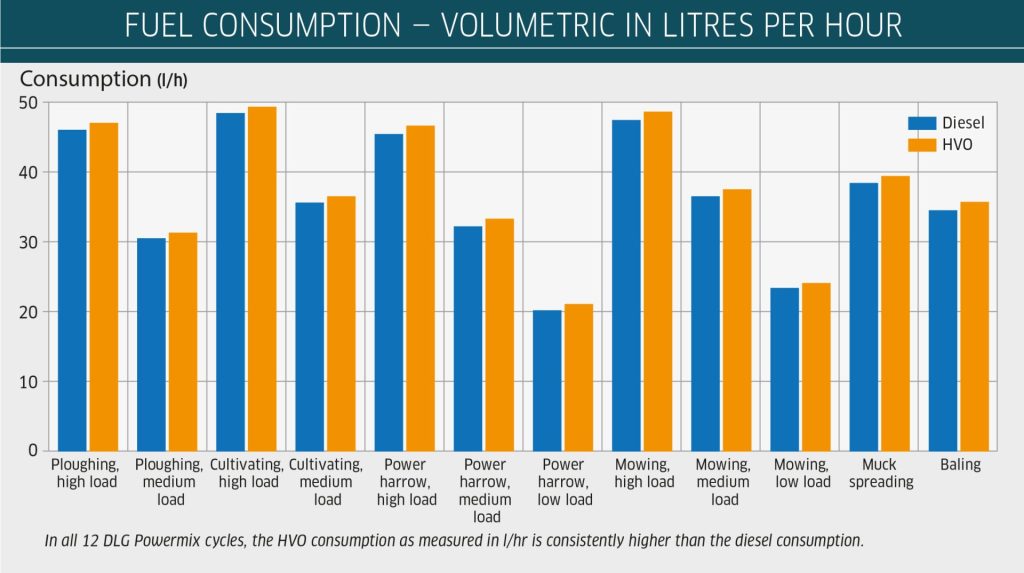
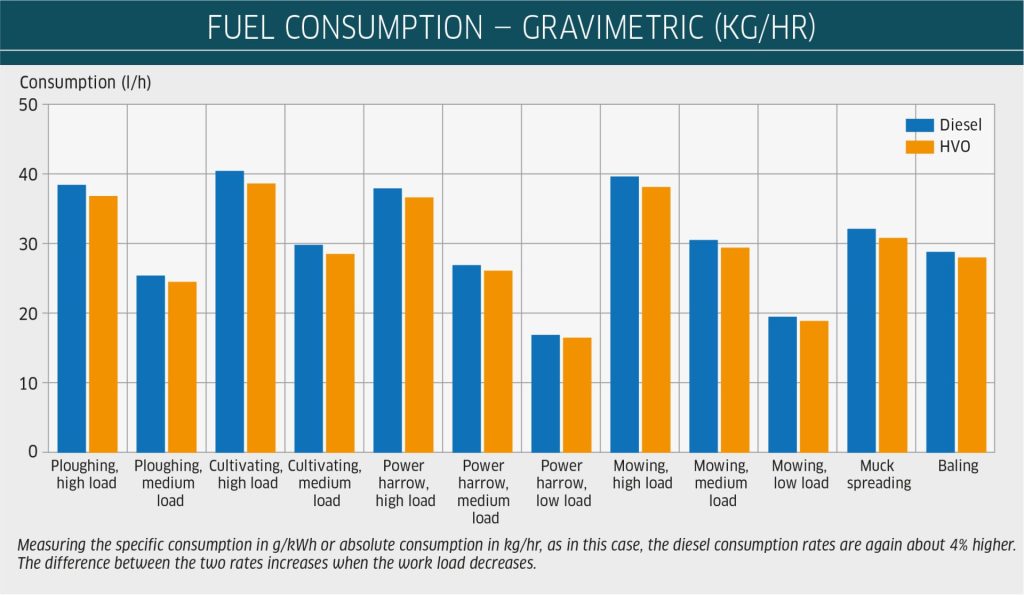
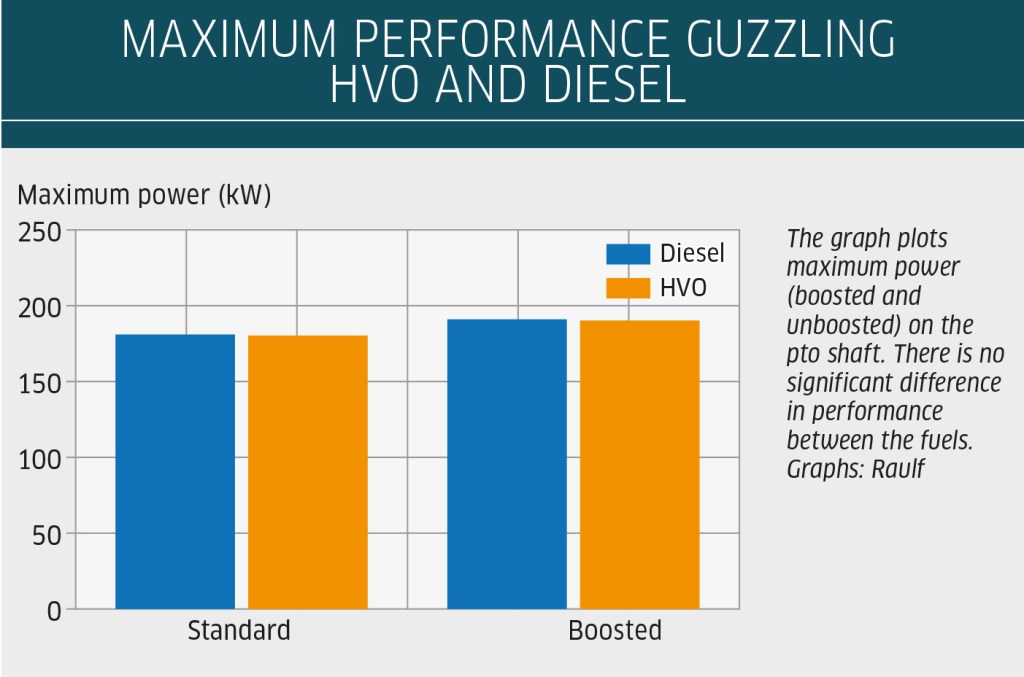
More efficiency
Although relatively small, it is clear that HVO does have an effect on overall engine efficiency. According to the DLG Powermix measurements, efficiency increases by up to 1.0% to diesel, depending on specific fuel consumption. Experts point out that HVO’s higher cetane rating ignites faster and also increases the combustion temperature to improve efficiency. The so-called premium fuels, such as Shell V-Power, have a similar effect.
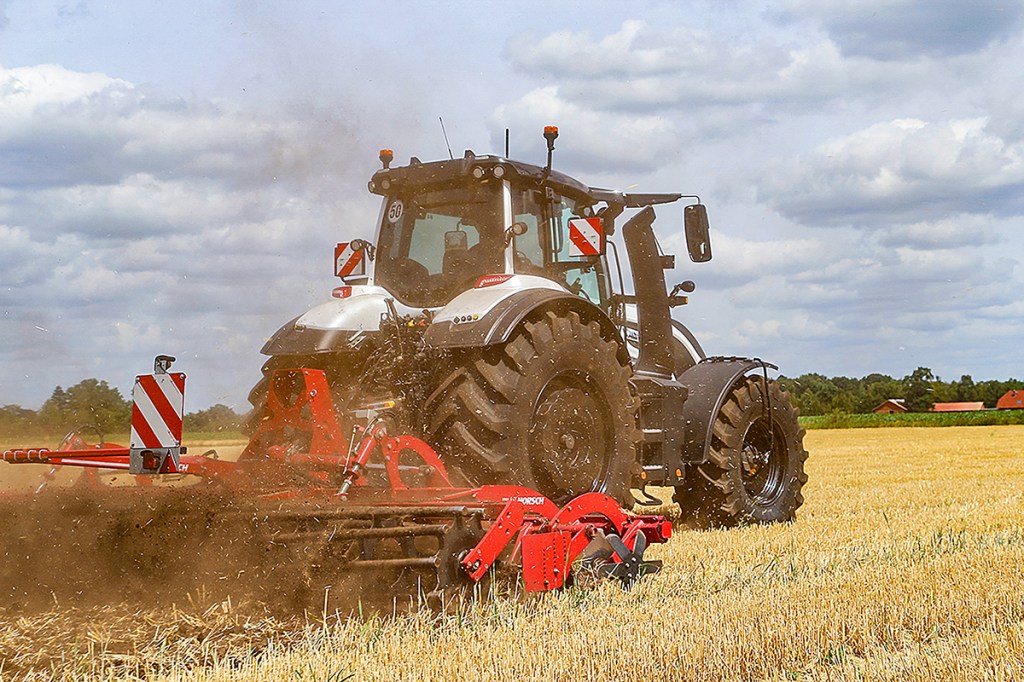
Valtra is currently working on a long-term study that will involve a number of tractors in Finland. The figures suggest that HVO is particularly beneficial at the country’s very low temperatures. Consequently, it’s city councils and hauliers in particular who rely on HVO, in part because their ‘customers’ demand low-CO2 transport.
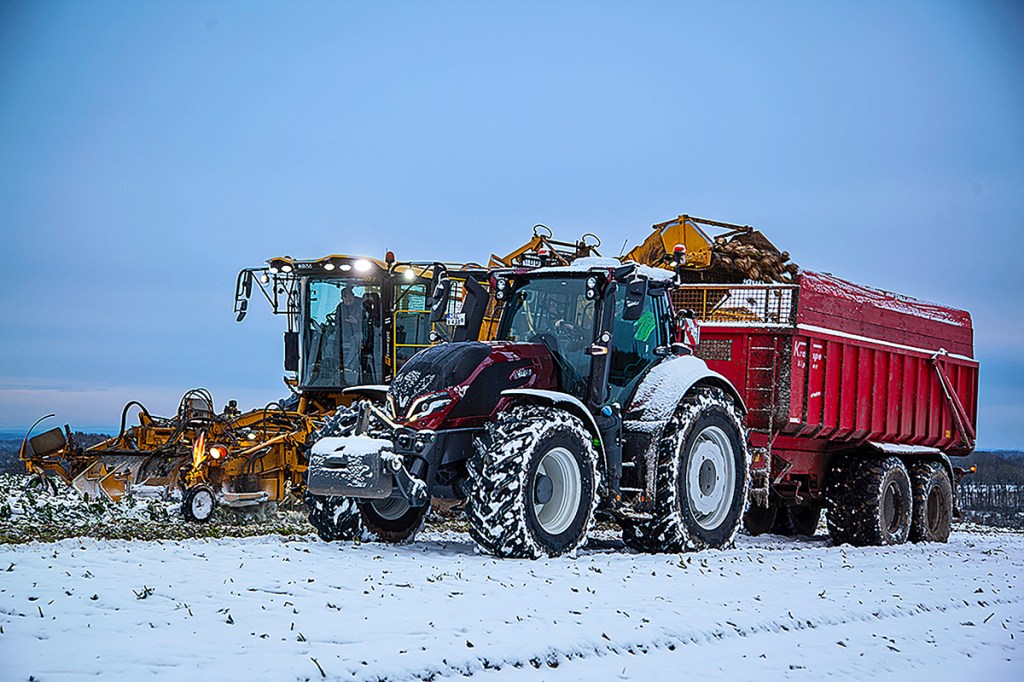
Summary
You can use HVO without any issues if it’s worthwhile to your business. Even though consumption may be 3% higher, the engine efficiency increases minimally with HVO. The higher consumption is due to the lower density of HVO compared to diesel, the better efficiency resulting from the higher cetane number. The DLG measurements show no drop in performance. Physically, therefore, there is no concern about using HVO as an alternative fuel.
Tobias Bensing
For more up-to-date farming news click here and subscribe now to profi and save.

